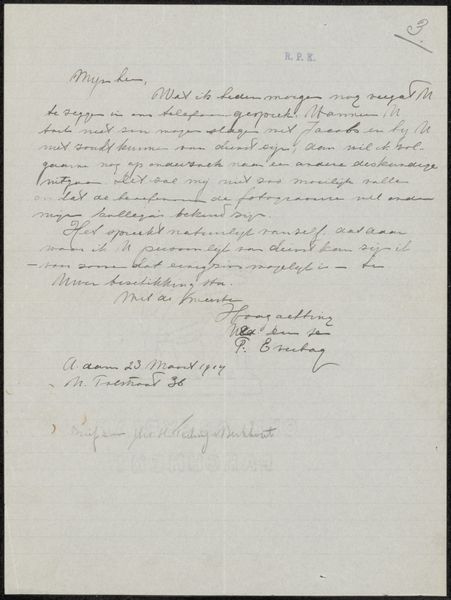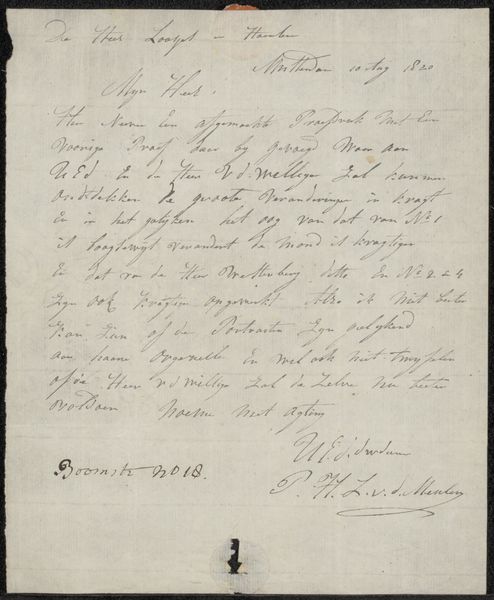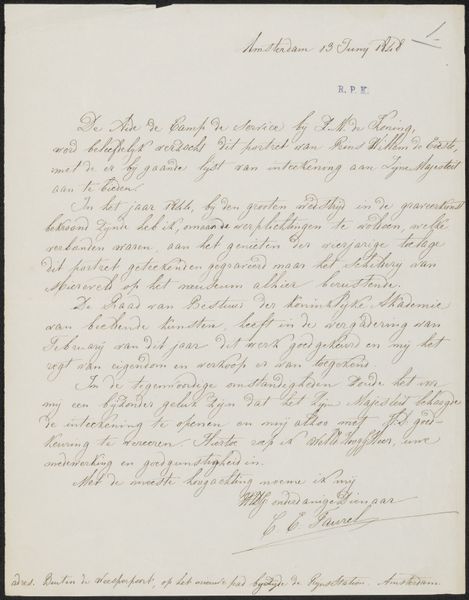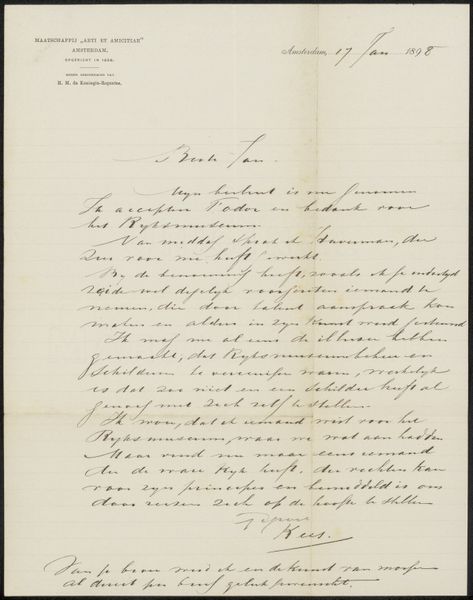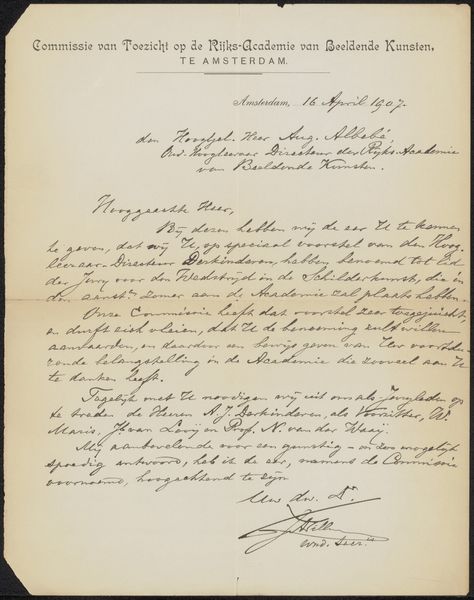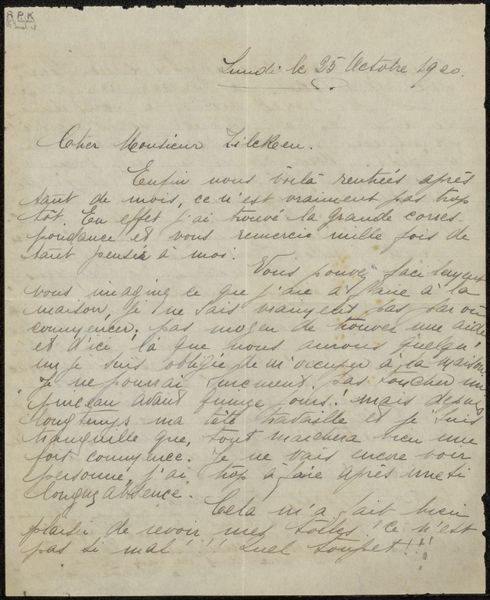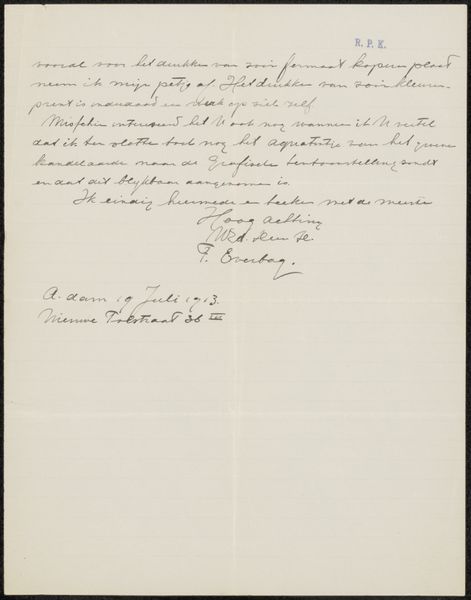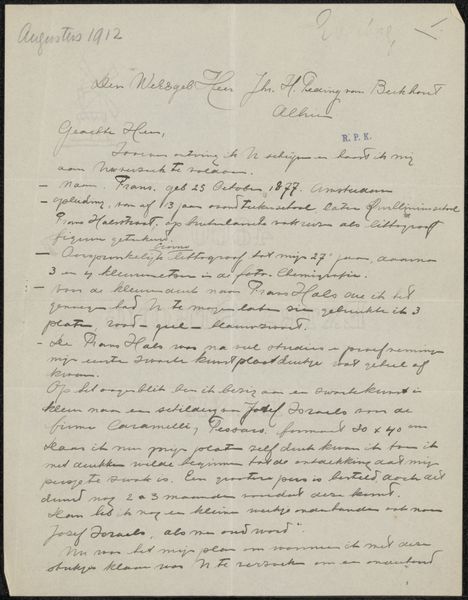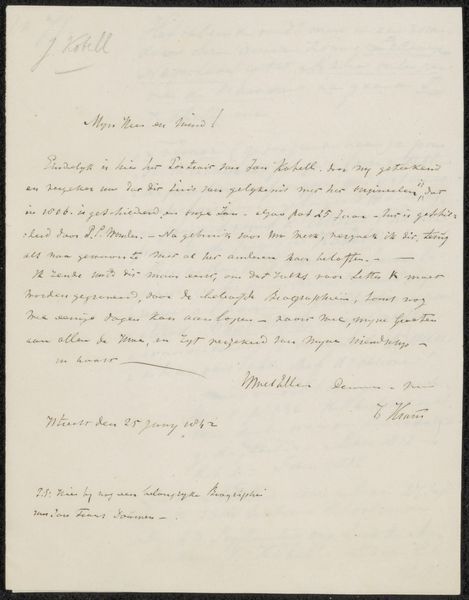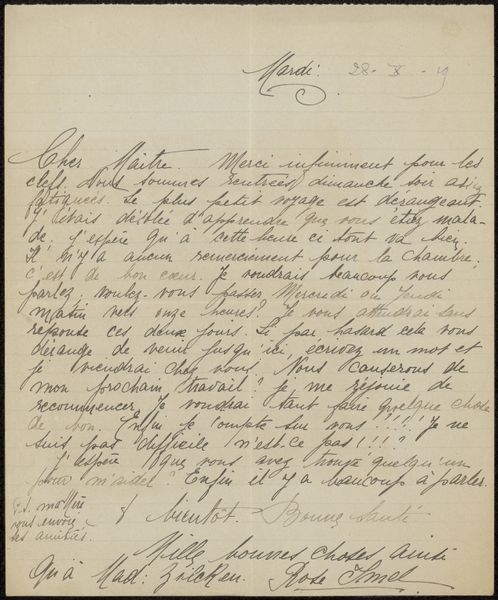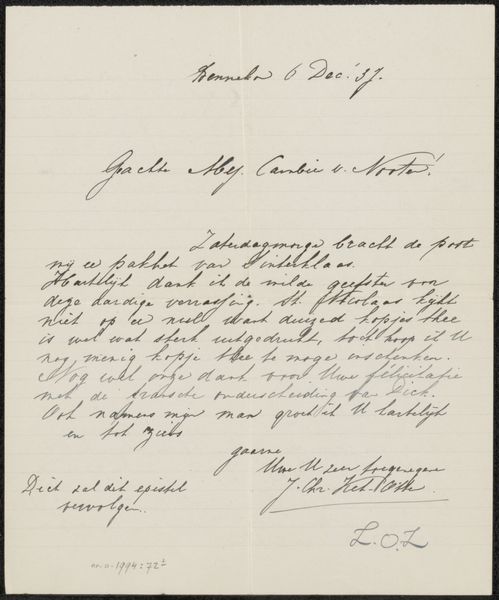
drawing, paper, ink, pen
#
portrait
#
drawing
#
hand-lettering
#
sketch book
#
hand drawn type
#
hand lettering
#
paper
#
personal sketchbook
#
ink
#
hand-drawn typeface
#
pen-ink sketch
#
sketchbook drawing
#
pen
#
storyboard and sketchbook work
#
sketchbook art
Copyright: Rijks Museum: Open Domain
Editor: This artwork presents a letter titled "Brief aan jonkheer Hendrik Teding van Berkhout," possibly from 1915, by Frans Everbag. It's a pen and ink drawing on paper. I am fascinated by the intimate nature of this handwritten letter and the glimpse it offers into another era. What aspects stand out to you? Curator: The letter presents itself as a social artifact embedded in a specific historical moment. The letter, potentially from 1915, exists during World War I when personal correspondence gained profound significance for morale and connection. Its medium – pen and ink – is inherently linked to practices of literacy and societal structure. How might the letter form shape both content and intent of the writing? Editor: Well, the handwritten nature suggests a level of personal investment compared to typed correspondence. Curator: Precisely. Consider who has access to writing materials and the skill of penmanship during that era. Beyond being an act of communication, could writing and its aesthetics reinforce power and societal roles? Does the handwriting's style point towards social status, education, or other subtle assertions? Editor: That’s an interesting point. I hadn’t considered the act of handwriting as something potentially exclusive or even performative. So the choice to physically write communicates a layer of the author that something like a typed letter doesn’t have. Curator: Exactly! The visual representation matters as much as the written words. The materiality and method are parts of the message. The form affects meaning as it reaches the recipient and subsequently, us. I learned something new myself today too. Editor: I see how this letter is a nexus of social and political forces, communicated directly on the page, how its survival serves its cultural preservation too.
Comments
No comments
Be the first to comment and join the conversation on the ultimate creative platform.
